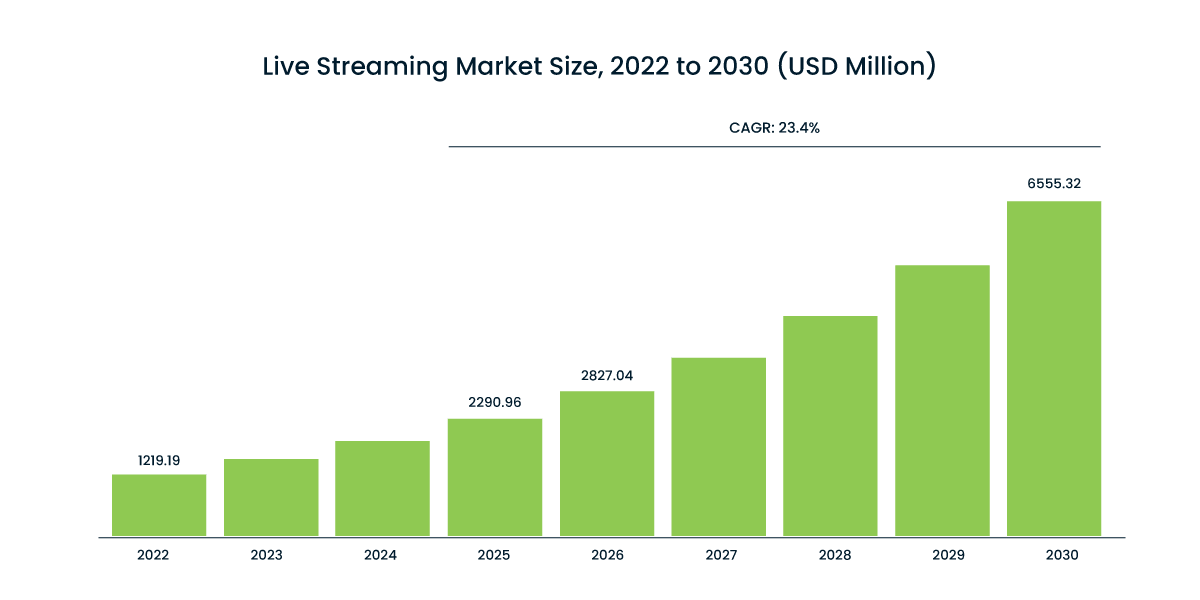The holy grail isn’t something you obtain. It’s something you quest after. It’s an ideal.
In live sports streaming, the holy grail of streaming programming — the ideal vision of success — is a seamless, real-time experience that beats the standards of linear broadcasting. The tool you need to pursue that vision is actionable information from every-session, every-minute, at-scale live sports analytics.
Key Takeaways:
- You need data on every session at every minute to stay competitive in the fast-paced game of live sports streaming.
- The playing field is changing; quality of service and quality of experience are becoming the defining business success factors.
- Even the biggest players are having QoE/QoS issues — but they’re collecting granular data, learning from their mistakes, and making real-time improvements.
The Holy Grail of Programming: Live Sports Streaming
Live sports are engaging. Schedules are predictable, letting you plan out your resource allocations far in advance of the broadcast. Audience levels are also predictable, which translates into bankable advertising revenue projections.
On the other hand, big events are a huge operational challenge — even if you know what’s coming and prepare accordingly. Viewers expect a flawless experience. Demand is as high as it gets. You’re working with traffic levels that far exceed anything you’re used to. You need an analytics platform that empowers your team to react in real-time to the unexpected issues that are bound to come up.

These factors and many more all add up to live athletic events being the holy grail of streaming — but that’s not really what this article is about. Here, we’re talking about using live sports analytics to deliver the holy grail of quality of experience to your audience:
- At scale to millions (or, in some cases, hundreds of millions) of viewers
- To an incredibly diverse end-user device landscape
- With adequate video quality and very few adverse events
Providing these three factors at the same time seems to be beyond the capabilities of even the biggest players in tech and broadcasting. Everyone’s struggling.
The difference between industry leaders and the rest of the pack is clear. The winners are learning from their mistakes by collecting and analyzing huge amounts of data from their broadcast streams, often in real time. This leads to incremental service improvements as well as incredibly nimble recoveries from technical issues.
As for the losers, they typically do not have a granular understanding of what’s going into these QoE disruptions. They’re falling behind because they’re depending on anecdotal decision-making, incomplete data, and delayed analysis.
Your Way to a Win With Analytics
Data is the key to success in meeting the often-demanding standards of a sports audience. This is even more important as streaming services begin to merge and participate in shared platforming. You can only make anecdotal decisions for so long — incomplete, irrelevant, or misleading information is only going to lead to mistakes.
As you scale up, all of those little mistakes and inefficiencies are going to come crashing down on your QoE. You’ll start to lose progress and maybe even see some significant losses.
Set yourself up to succeed. Live sports analytics help you see exactly what the problem is and when using tools such as AI-powered real-time alerts, they also point you toward the most likely root causes.
All of this lets you bet your business on facts, not guesses. Nothing’s a sure thing but, as any sports betting fan can confirm, it’s better to put your money on data than it is to go with your gut.
A Single Source of Truth
So, you need to measure the audience’s experience. The problem is that QoE depends on so many factors:
- Video performance and quality
- App experience
- Network load versus capacity
- Ad video performance
- Content delivery network configuration
- Audiovisual encoding
Those are just a few examples. To make matters worse, the target moves when you start drilling down into specific audience subsets. More on that point later.
Traditionally, you’d measure with various different tools. In the best-case scenario, you’d bring them together in a single dashboard — but you’d still have several metrics to balance and consider. In the worst case, you have non-standardized data throwing off your perception and leading you to bad decisions.
There’s a better way: aggregating all of the live sports streaming QoE metrics into a single, census-based, temporal audience measurement platform. This lets you unlock the true power of one of your biggest potential assets: your real-time data stream.
The Constantly-Moving Objective
What’s the most important metric for live sports viewers? Is there really a holy grail out there that you can pursue?
You might say you want to get to zero buffering events, or maybe that you want 4K ultra-high definition available to all subscribers. The problem is that, when you only go after specific metrics, you’re going after a moving target.
You need to zoom out to get the overall vision if you want lasting success. Minor mission-based objectives are not going to help you solidify your base in this type of competitive environment.
There are two factors that go into this. The first is getting a big-picture view of QoE and quality of service — but that only works when you aggregate from a weighted, standardized data set. The second is drilling down into your key live sports analytics metrics, such as:
- Lag lengths (especially important for sports audiences)
- Bit rates
- Buffer fill times
Then there’s the issue of specific subsets of your audience. The most important defining factor here is the type of end-user device. Your smartphone viewer is going to have different QoE priorities than your audience watching the game on a big-screen TV at a sports bar. Different mobile devices even have different needs, depending on the size and resolution of the screen, the speed of their connection, and so on.
It might seem like you need to know everything. You don’t need everything in front of you, but you do need a solution such as Conviva that provides actionable analytics on a real-time, census-based data stream.
A Quest To Improve Your Business
As you consider this holy grail of sports streaming analytics, remember that you’re not pursuing in-the-moment QoE in a vacuum. You’re also using it to build and strengthen your business:
- Optimization: Tracking your real-time responses in a closed-loop decision system lets you assess and direct longer-term optimization efforts.
- Loss Control/Piracy: Getting census-based, real-time insight helps you identify outlier behavior that could degrade QoE/QoS and cost you money in the form of lower subscribership/higher cost of ownership.
- Process Efficiency: Tools such as AI alerts, real-time analytics, and configurable metrics reduce maintenance costs, communication complexity, and the payroll burden of operating your core services.
As you develop a strategy to improve QoE, consider how every aspect of that strategy fits into the greater goals of your business.
A Sip From the Holy Grail of Live Sports Streaming Analytics
This technology is ready for you to test today. Check out our partner ecosystem or click here to see Conviva in action.





